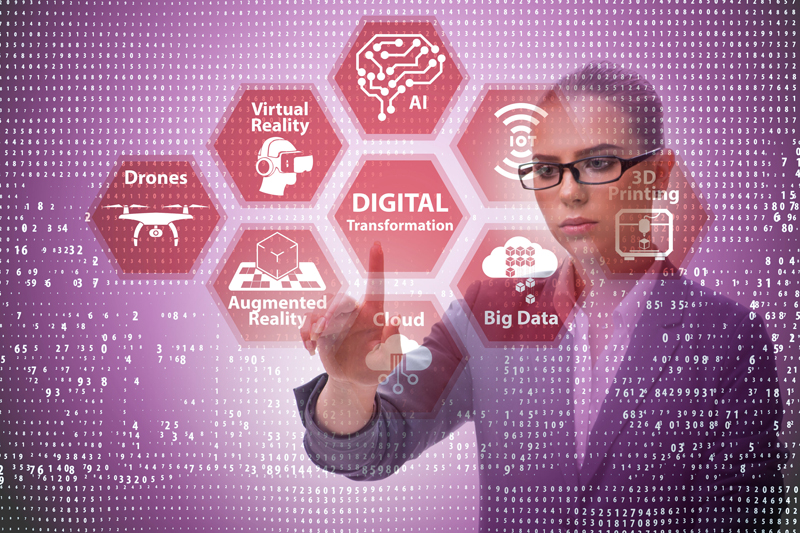Regardless of the industry you are in, you need to stay competitive to succeed. Getting the right kind of support is crucial to streamline your workflow and boost revenue. That’s where business process outsourcing comes in. With increasing digitization of processes and value-added services, outsourcing is helping organizations grow and flourish. The current pandemic has also brought about a digital transformation by enabling automated home-based work spaces.
How did Covid-19 impact Organizations?
There is no argument that Covid-19 is an unforeseen disaster. Many industries have suffered, livelihoods are shattered and the economy is going downhill. But the pandemic is accelerating the use of digital technologies in various scenarios, including everyday life. In the corporate world, Covid-19 has resulted in the work-from-home arrangement. This has brought about a digital transformation which will improve performance and streamline operations for organizations in the days and years to come. Even if things get back to normal, the efficiency of AI and connected tech-powered smart offices could lead many organizations to potentially continue the work-from-home office arrangement.
Facilitating Digital Transformation
Here’s a look into how Covid-19 is bringing about positive changes in terms of a digital transformation, though it did cause a significant disruption.
- Why Automation Is RisingThe importance of automation has come to light. While automation has already been seen in factories where industrial robots constitute almost 1% of the workforce, the need to reduce the presence of humans in workspaces as a result of the pandemic has increased the desire for robotic process automation. It is already a booming billion-dollar market. But now the support for such automated processes has just soared. The rising cost of the human workforce has brought about this change.
- The Importance of Employee ExperienceEmployee experience has suddenly become a critical factor. In many HR departments of IT companies, this was considered an extra and something not really important, particularly for businesses operating on tight budgets. But with Covid-19 causing offices to impose work-from-home arrangements, a significant portion of the workforce now works remotely. As a result, employee experience has become critical to ensure reliable work performance. Upgrading to high quality tech and shifting the focus to problem solving ensures employee experience is finally getting the attention it deserves.
- More Tech HiringCovid-19 has caused organizations to increase tech hiring. Because of the greater dependence on technology to facilitate remote workplaces and automated processes, troubleshooting is an essential aspect. Moreover, there are government regulations and heightened security demands to deal with. The aforementioned employee experience is also an important aspect of facilitating remote working. As a result, tech jobs have increased at a greater scale because of more tech support requirements.
- The Prevalence of the Coaching Tech ModelThe tech support that’s required is also more of a coaching model. It often requires real time collaboration with tech support staff to deal with the issues faced. This bodes well for technology professionals. Chatbots are also find increasing use.
Improved Scrutiny driving Improvements
Covid-19 has also helped organizations examine themselves and identify issues. While the digital transformation trend was on the rise even before the pandemic, organizations have now begun carrying out more detailed scrutiny of their technological and digital capabilities. Conflicting systems are being removed or improved, while redundant systems are being put to use. Capabilities that were found missing have been brought to light. This is improving organizational efficiency and workflow.
More High Tech Pandemic-influenced Office Concepts
Many futuristic office concepts have emerged which could dictate how future offices could work. Covid-19 is the facilitator of this change:
- Facebook has showcased an augmented reality (AR) workstation. Called the Mixed Reality Concept, it is a computing platform with virtual reality projections of keyboards, devices as well as avatars of employees. It also features virtual meeting rooms. This computing platform combines augmented reality and virtual reality.
- The Six Feet Office by Cushman & Wakefield is another new concept. Despite the possibility of the work-from-home arrangement continuing, there still would be office spaces. The Six Feet Office transforms existing offices to those that strictly maintain the six-feet rule of social distancing. According to the creator Arjun Kaicker, this will be brought about by increasing the sizes of office desks to ensure people don’t sit too close.
- Contributing to social distancing would be the contactless office. Zaha Hadid Architects has developed an office where employees really don’t need to touch the building to open doors or perform other functions. Facial recognition and motion sensor technology enable doors to automatically open while coffee can be ordered and lifts operated without contact. Beacons installed in employees’ smartphones can monitor their movement and ensure they maintain the six-feet distance.
Not all businesses can introduce these futuristic concepts. But they will continue to benefit from the technologies working for them through back office outsourcing to handle various tasks such as document conversion, data processing, and more.




